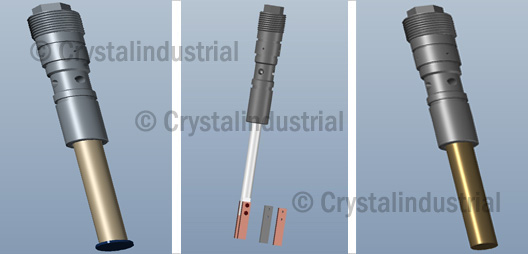

This is one of the most frequently asked questions. There are no particular guidelines about how frequently the corrosion analysis needs to be done. The frequency of how often you should do this analysis depends on some factors; the most important factor being the observed data. If you observe low rate of corrosion, the frequency of analysis should be increased. The corrosion analysis should also be more at sensitive areas, where the probability of risk is more or where there is a history of corrosion.
Now there is a negative consequence if the corrosion coupons are pulled out for analysis too often, especially if you are using the weight loss process. This may provide you with misleading results as the nature of corrosion growth and the calculation involved in measuring the General and Pitting corrosion rates. The expert engineers consider corrosion growth as a non-linear activity and the calculation of prorating the measured corrosion to mpy (mils per year) is linear.
Again if you pull the corrosion coupons after long intervals in the weight loss process, this may also lead to misleading corrosion data. This is due to the fact that, if the process is delayed, the corrosion rates are prorated on an annual basis and hence severe corrosion evens may get lost in the average calculation. For example, if the corrosion data is obtained annually and if there was severe corrosion at a single month, that month's corrosion attributes only 1/12th of the total calculated corrosion data. Moreover, if the corrosion data is not quite large, it may totally get lost in the annual corrosion data.
The two important factors of monitoring corrosion to get effective data are the selection of location and the position within the pipeline where the corrosion coupon or the electronic probe has to be installed. As the objective is to get the corrosion data, it is important that you place the corrosion coupon or probe in the electrolyte, where the corrosion cell exists. Generally, most of the corrosion occurs at the bottom of the pipeline, where the water deposition is most.
Sometimes the corrosion also may occur at the top of the pipelines or you may have to monitor single or multiple phases. Under such circumstances, the corrosion coupons are installed at various parts of the pipelines. For effective corrosion monitoring, the corrosion coupon has to be placed where the corrosion is most, for example, you should not place the corrosion coupon at the top of the pipeline if the corrosion occurs at the bottom of the pipeline.
Besides the process of using weight loss corrosion coupons, there are some other methods as well using which you can monitor internal corrosion on pipelines. It is always suggested to use multiple corrosion monitoring methods to get relevant corrosion data. Besides the weight loss process, the water analysis, use of electronic probes, Fe/Mn and corrosion Inhibitor residuals are other popular ways to measure corrosion.
